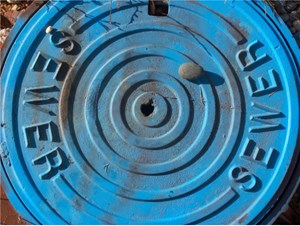Arkansas water commission pitches $22 million plan to expand Springdale’s sewer capacity
(UI) — A report on options to expand the sewage service's capacity on the southeast side of Springdale and in the city of Johnson was presented to the Water and Sewer Commission on Jan. 18, the Arkansas Democarat-Gazette reported.
Through the year 2045, the measures might guarantee that sewage capacity is sufficient for projected development projects.
Johnson's sewer service is provided by Springdale Water Utilities, which is under the commission's supervision.
Additional force main pipes, storage tanks at pumping stations along the line, or a mix of both could be the solution. The presentation was made by Chris Dougherty and Brad Hammond of the engineering firm Olsson.
Heath Ward, executive director of Springdale Water Utilities, told the Arkansas Democrat-Gazette that the renovation would cost around $22 million. He anticipates that the commission will use a combination of capital funds, utility revenue, and borrowed cash to cover some of the costs.
He mentioned that the company is qualified for loans from the Arkansas Natural Resources Commission with 1.5% interest rates. The commission has given the utility current a $2 million loan for the restoration of the former Bethel Heights wastewater infrastructure.
The southside sewer system's completion, according to Ward, should take around two years.
As per engineer Dougherty, heavy rain can currently overflow certain places in the city's sewer system. According to Chris Weiser, the commission's chairman, the Water and Sewer Commission also needs to have the necessary infrastructure in place to serve Springdale through the year 2045.
The Northwest Arkansas Regional Planning Commission, Springdale will have a population of 154,000 in 2045, an increase of 2.5% from 87,400 in 2020. 3,631 people were counted in the Johnson census for 2020.
According to Ward, the Springdale Planning Commission has given the go-ahead for almost 2,000 residential units to be built in the city's southeast. Johnson will get a 1,700-unit complex, Hammond continued.
Ward informed the commission in February 2022 that without modifications to the city's system, the utility was unable to ensure that new construction in the southeast quadrant of the town would have access to sanitary sewer service. Without the modifications, he warned, the utility could have to impose a freeze on the construction of new homes.
Ward stated on Wednesday that depending on the size of the project, the utility engineers are approving sewer capacity on a case-by-case basis. He also emphasized the fact that many developments that the utility and the city permitted have yet to start building.
Dougherty said Olsson engineers examined the drainage basins that were utilized by the utility's Butterfield Coach, Clear Creek, Johnson, and Robinson Avenue pumping stations.
According to a graphic Dougherty displayed, water from the city's east side enters the Butterfield Coach station first before being pumped via two 12-inch pipes to the Clear Creek station. A 16-inch line is used to pump water from Clear Creek to the Robinson Avenue station. A 16-inch pipe pumps water from the Johnson station to Robinson Avenue.
Dougherty added that all the water from Johnson and the southeasterly areas of the city is pushed through a 24-inch line at Robinson Avenue to the city's wastewater treatment facility on Silent Grove Road.
At numerous locations along the line, storm gutters can also allow water to infiltrate the system, according to Ward.
According to Dougherty, Olsson examined the system's performance in the present for a five-year, 24-hour storm. He stated that there is a 20% probability that a storm like this will reach the region at any moment. According to Dougherty, the rain would fall at a rate of around two tenths of an inch per hour, totaling 4.6 inches in 24 hours.
Starting around 12 to 18 hours into the storm, the water entering the Johnson and Robinson lift stations would start to exceed the stations' ability to pump. There would be a full station at Clear Creek. The Butterfield Coach stop is still equipped to withstand the blizzard.
The analysis took into account the pumping stations' present pace of operation as well as the storm's increasing population in 2045.
Over the course of the upcoming month, the utility's staff engineers will evaluate the four options Olsson presented or come up with a hybrid of many plans, according to Ward. At the subsequent commission meeting on February 15, he stated, he intends to provide a suggestion to the commission and request approval for contracts to start the project's design work.
Related News
From Archive

- Glenfarne Alaska LNG targets late-2026 construction start for 807-mile pipeline project
- U.S. water reuse boom to fuel $47 billion in infrastructure spending through 2035
- $2.3 billion approved to construct 236-mile Texas-to-Gulf gas pipeline
- Major water pipe break in Puerto Rico hits over 165,000 customers
- Potomac River Tunnel project enters construction phase beneath Washington, D.C.
- Pennsylvania American Water launches interactive map to identify, replace lead water service lines
- Trump's tariffs drive $33 million cost increase for Cincinnati sewer project
- Utah city launches historic $70 million tunnel project using box jacking under active rail line
- Tulsa residents warned after sewer lines damaged by boring work
- Fatal trench collapse halts sewer construction in Massachusetts; two workers hospitalized




Comments